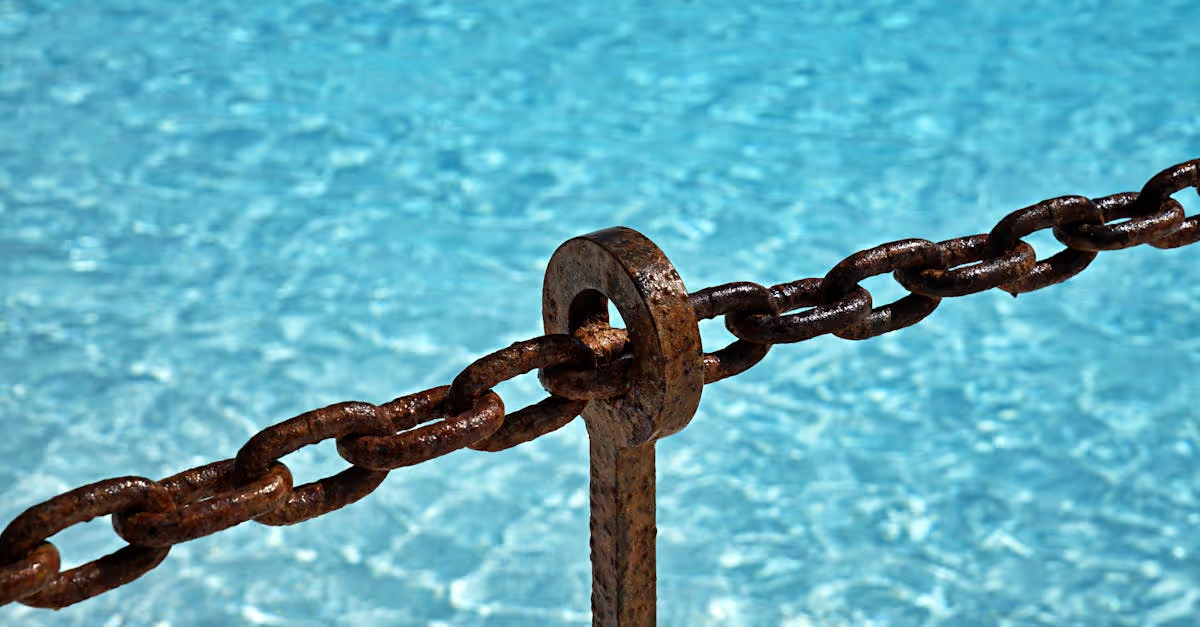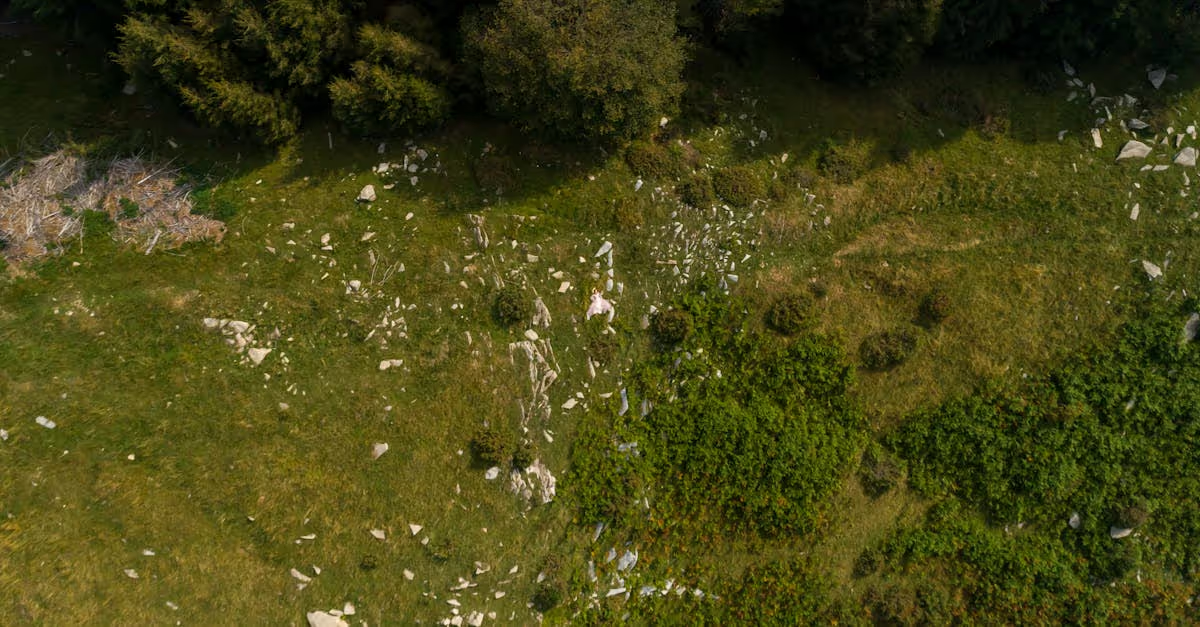Key Takeaways
- Prioritize Leaf Removal: Regularly clear leaves to prevent staining, algae growth, and equipment clogs, ensuring clear and inviting pool water.
- Conduct Equipment Checks: Thoroughly inspect pumps, filters, and heaters before winter to avoid costly repairs and ensure optimal performance throughout the colder months.
- Balance Water Chemistry: Test and adjust pH, alkalinity, and chlorine levels weekly to maintain healthy water conditions and prevent algae growth.
- Prepare for Winterization: Lower water levels, clean pool surfaces, and cover the pool properly to protect against debris and damage from freezing temperatures.
- Establish a Maintenance Routine: Create a regular schedule for leaf removal, water testing, and equipment checks to streamline your fall pool preparation efforts.
- Engage in Community Activities: Organize fun gatherings like a "Pool Closing Party" to share tips and experiences, making maintenance a more enjoyable and communal task.
As summer fades and fall approaches, it’s time to shift our focus to preparing our pools for the cooler months ahead. Did you know that neglecting proper fall maintenance can lead to costly repairs? A well-maintained pool not only extends its lifespan but also ensures a smooth transition into winter.
Overview of Pool Preparation for Fall
Preparing our pool for fall is key to maintaining its condition as summer comes to an end. Neglecting necessary tasks during this season can lead to costly repairs in the long run. By engaging in proactive maintenance, we increase the pool's lifespan and ease the transition into winter.
Leaf Removal
Leaf removal takes priority as trees shed their foliage. We must grab our nets and skimmers to clear out debris. Any buildup can lead to unsightly stains and affect water quality. A quick daily check keeps leaves from piling up and prevents serious issues later. Plus, nothing beats the satisfaction of skimmed water – it’s like achieving a perfectly smooth ice cream scoop!
Equipment Checks
Next, we check our pool equipment. Inspect the pump, filter, and heater for any signs of wear. Consulting the user manual can help us identify specific maintenance needs. Missing this step could mean slow circulation and uninviting water temperatures as the days grow colder. Regular upkeep on our equipment ensures we can jump into a warm pool instead of a chilly bath next season.
Water Chemistry Balance
Maintaining proper water chemistry is essential during fall. Testing pH, alkalinity, and chlorine levels helps us avoid algae growth and balances sanitation. Record these levels for reference. It gives us peace of mind knowing our pool remains inviting. If we notice imbalances, adjusting with the right chemicals helps maintain crystal-clear water throughout the fall season.
Winterization Preparation
As fall progresses, we should prepare our pool for winter. This might include adjusting water levels and covering the pool. While winter covers protect the pool from falling debris, it also limits evaporation. However, if we skip this step, our pool could become a winter swamp or worse, an ice rink!
Regular Maintenance Schedule
Creating a routine maintenance schedule helps us stay on track through fall. Setting reminders for tasks, like skimming leaves, testing water, and checking equipment, can make a big difference. Technology can be our ally here. Utilizing service business software or a mobile field service app streamlines tasks and keeps us organized. When we make it easier to track maintenance, we enjoy our pools even more.
By committing to pool preparation this fall, we cultivate not just a clean pool but a vibrant community space for families and friends. Whether it’s hosting a fun fall gathering or simply enjoying a peaceful evening, our efforts in preparation pay off.
Importance of Leaf Removal
Leaf removal plays a vital role in maintaining our pools during the fall season. Leaves can stain the pool surface and encourage algae growth. Addressing leaf accumulation promptly prevents water imbalance and potential contamination. Not addressing leaves can lead to costly repairs down the line.
Leaves and debris also threaten our pool equipment. They can clog pumps and filters, leading to damage that affects performance. Regular removal preserves our equipment's efficiency, meaning we spend less time worrying and more time enjoying our pool.
Keeping our pool water clear is another crucial reason for leaf removal. Removing organic material helps maintain safe, inviting water. We don’t want unexpected visitors (like algae) crashing our pool parties!
Tools for Effective Leaf Removal
We typically use essential tools for effective leaf removal. These tools streamline our efforts and make the task more manageable.
- Leaf Shovel: A leaf shovel features a wide mouth with a deep net. This design captures more leaves while preventing them from slipping away.
- Skimmer Net: A skimmer net helps us reach leaves floating on the water’s surface. It's perfect for quick clean-ups before we dive in.
- Pool Vacuum: For those pesky leaves at the bottom, a pool vacuum can suction them away efficiently. This ensures we’re swimming in clear water.
- Leaf Blower or Rake: We can also utilize leaf blowers or rakes to gather leaves around the pool area. This keeps our deck free of debris too.
Techniques for Leaf Removal
Finding the best techniques for leaf removal keeps our pool looking pristine. We can adopt a few straightforward methods to deal with fallen leaves.
- Daily Checks: We can commit to daily inspections of our pools. This small routine makes a big difference in keeping leaves at bay.
- Use a Leaf Net: Installing a leaf net over the pool surface can catch leaves before they sink. This saves time during clean-up.
- Skimming: Skimming the surface with our net daily prevents leaves from dropping and decaying. This simple extra step keeps the water clear.
- Vacuuming: Regularly vacuuming the pool helps us remove leaves that settle on the bottom. A clean pool is more inviting for family and friends.
Equipment Checks Before Fall
Preparing our pool for fall involves checking and maintaining essential equipment. Proper maintenance prevents issues during colder months, making the transition smoother and avoiding costly repairs.
Inspecting Pumps and Filters
Inspecting pumps and filters is crucial as we prepare for the fall. We must check for leaks, cracks, and any signs of wear. A faulty pump can lead to inadequate water circulation and heat retention, causing temperature fluctuations. Clean filters to ensure they operate effectively, as clogged filters strain the pump and increase energy consumption. Regular inspection keeps our pool safe and our energy bills manageable.
Checking Pool Covers
Checking pool covers is another important fall preparation task. A well-fitted cover protects our pool from debris and winter weather. We should inspect for tears, cracks, or any damage that might allow rainwater or snow to enter. Ensure all springs and straps function properly and replace any worn-out parts. Investing in a quality cover minimizes the effort needed for spring reopening and keeps our pool clean.
By focusing on these equipment checks, we maintain healthy, inviting pool conditions through the fall and into winter. Taking proactive steps helps avoid surprises down the line, making our pool experience enjoyable year-round.
Water Chemistry Adjustments
Maintaining proper water chemistry is crucial as fall arrives. As temperatures drop, we must adjust our pool's chemical balance to prevent issues like algae growth. Testing water chemistry weekly allows us to catch imbalances early, ensuring our pool remains clear and inviting.
Chlorine Levels
- Regularly test chlorine levels. Aim for a range of 1 to 3 parts per million (ppm). Lower temperatures can reduce chlorine demand, but don't let levels drop too low. Adding a chlorine shock can help restore balance quickly.
pH Balance
- Check and maintain pH levels between 7.2 and 7.8. High pH can lead to cloudy water and scale buildup, while low pH can damage equipment. Adjust pH using muriatic acid or soda ash to reach the desired range.
Alkalinity
- Total alkalinity should stay between 80 and 120 ppm. It acts as a buffer for pH levels, preventing drastic changes. If alkalinity is low, adding sodium bicarbonate can help stabilize it.
Calcium Hardness
- Calcium hardness should remain between 200 and 400 ppm. Low hardness can lead to corrosion, while high levels can cause scale buildup. Balance calcium by adding calcium chloride or diluting water if necessary.
Regular Testing
- We can use test strips or liquid kits to measure the levels mentioned above. Following manufacturer instructions will help us accurately gauge our pool's chemistry.
Time for Adjustments
- Adjusting chemical levels takes time. After adding chemicals, wait at least four hours before swimming. This ensures safe and optimal water conditions.
In addition to these adjustments, why not engage in a fun autumn activity? Consider hosting a “Pool Closing Party” when the swimming season ends. Invite friends over for a splash and barbecue. Pool preparations can be daunting, but they don't have to be all work and no play!
Winterization Steps
Preparing our pool for winter involves several key steps that help protect it during colder months. First, we should lower the water level. Keeping the water below the skimmer prevents freeze damage. Aim to lower it about 4 to 6 inches.
Next, we clean all surfaces. We can use a pool vacuum or scrub the walls and floor with a brush to remove any remaining debris. This cleaning prevents algae development and maintains water quality.
We also need to check and clean the filters. A clean filter functions effectively, promoting water circulation and keeping our pool waters clear. If the filter is sand or cartridge type, follow the manufacturer's instructions for cleaning.
Winterizing chemicals come next. Adds the right chemicals to balance the water chemistry before covering the pool. Add algaecide to prevent algae growth during colder months. Follow the recommended dosage for best results.
Also, consider investing in a durable pool cover. A solid cover protects against debris, snow, and ice. We often choose safety covers, which prevent unauthorized access and keep pets or children safe.
We should drain and winterize all pool equipment, including pumps, heaters, and filters. Drain all water from equipment to prevent damage from freezing. We also need to store any movable items like ladders or slides in a dry area.
Regular equipment checks keep everything in good shape. Inspect pumps and heaters for leaks or wear. Document any issues for future reference. Keeping records can help during repair time.
During fall, we can start embracing community activities. Imagine gathering with friends for a “Pool Closing Party.” We can share tips on maintenance while enjoying snacks and laughter. We could even have a contest for the best leaf-raking technique. What do you think?
While covering the pool, let's remember proper storage for tools. Store cleaning equipment like skimmers and brooms, ensuring they're ready for next season. A well-organized shed makes spring preparations much smoother.
As we transition to winter, regular checks become essential. Let’s keep an eye on the pool cover, ensuring it remains intact throughout the season. With these winterization tips, we can protect our investment and enjoy a hassle-free spring opening!
By joining together as a community, we can share knowledge and experiences. What are some winterization steps you’ve found helpful? Let’s learn from each other and keep our pools in top shape for sunny days ahead.
Conclusion
Preparing our pool for fall is essential for protecting our investment and ensuring a smooth transition into winter. By tackling leaf removal and conducting thorough equipment checks, we can prevent costly repairs and maintain a safe swimming environment.
As we embrace the changing seasons, let’s not forget the importance of proper water chemistry and winterization techniques. These steps will help us enjoy our pool area year-round and make our spring opening hassle-free.
So let’s take the time to prepare now and look forward to many enjoyable moments by the pool, whether it’s a cozy gathering or a refreshing dip next summer.
Frequently Asked Questions
Why is it important to prepare my pool for fall?
Preparing your pool for fall is crucial to prevent costly repairs and ensure a smooth transition into winter. Proper maintenance during this time helps extend the pool's lifespan, improves water quality, and minimizes algae growth.
What tasks should I prioritize for fall pool preparation?
Key tasks include leaf removal, checking and maintaining pool equipment, testing water chemistry, and adjusting water levels. These steps help prevent algae growth, protect your equipment, and prepare your pool for winter.
What tools do I need for effective leaf removal?
Essential tools for leaf removal include leaf shovels, skimmer nets, pool vacuums, and leaf blowers or rakes. These tools help maintain water quality and protect pool equipment from clogging and damage.
How can I efficiently manage leaf removal?
To efficiently manage leaf removal, conduct daily checks, use a leaf net, skim the surface regularly, and vacuum often. This proactive approach prevents algae growth and keeps your pool clean.
How often should I check my pool equipment during fall?
It's advisable to check your pool equipment at least once a week during fall. Regular inspections of pumps, filters, and covers ensure they function correctly and prevent costly repairs.
Why is water chemistry important in the fall?
Maintaining proper water chemistry in the fall is essential to avoid algae growth and keep the pool inviting. Regular testing helps catch imbalances early and ensures a safe swimming environment.
What are the steps for winterizing my pool?
To winterize your pool, lower the water level, clean all surfaces, and check filters. Adding winterizing chemicals and investing in a durable pool cover will protect against debris and freezing temperatures.
How can I celebrate the end of the swimming season?
Host a “Pool Closing Party” to celebrate the end of the season with friends. This fun gathering can include sharing maintenance tips while enjoying the last days of warm weather.
What maintenance should I do during winter?
During winter, regularly check your pool cover and store cleaning tools properly. Make sure to inspect the pool equipment periodically to prevent damage from freezing and maintain your pool’s longevity.






.svg)
.svg)